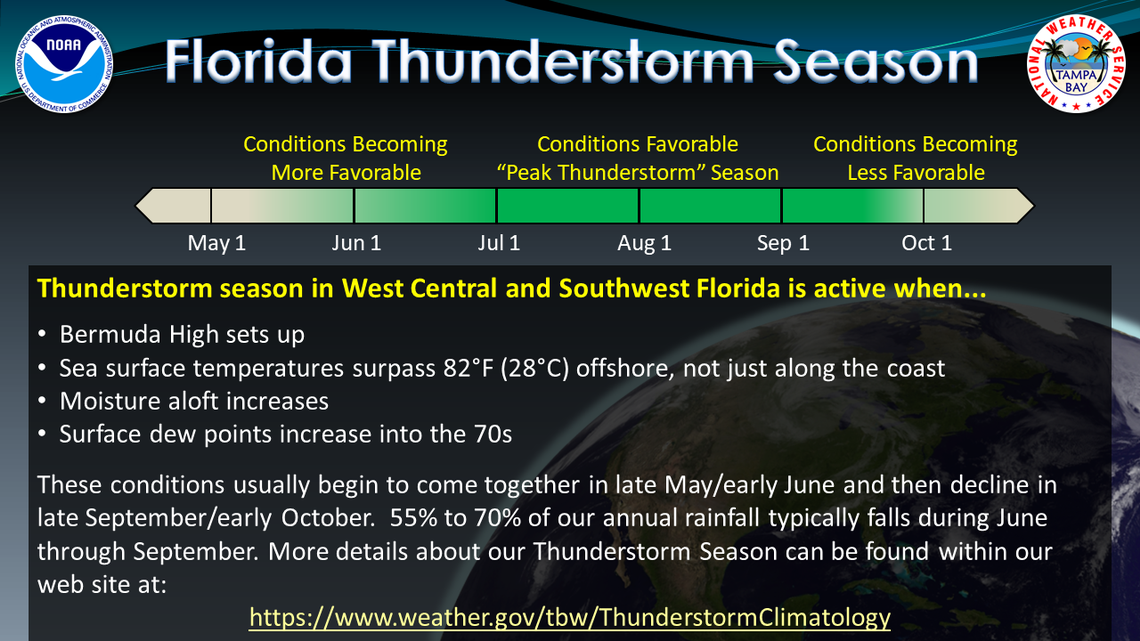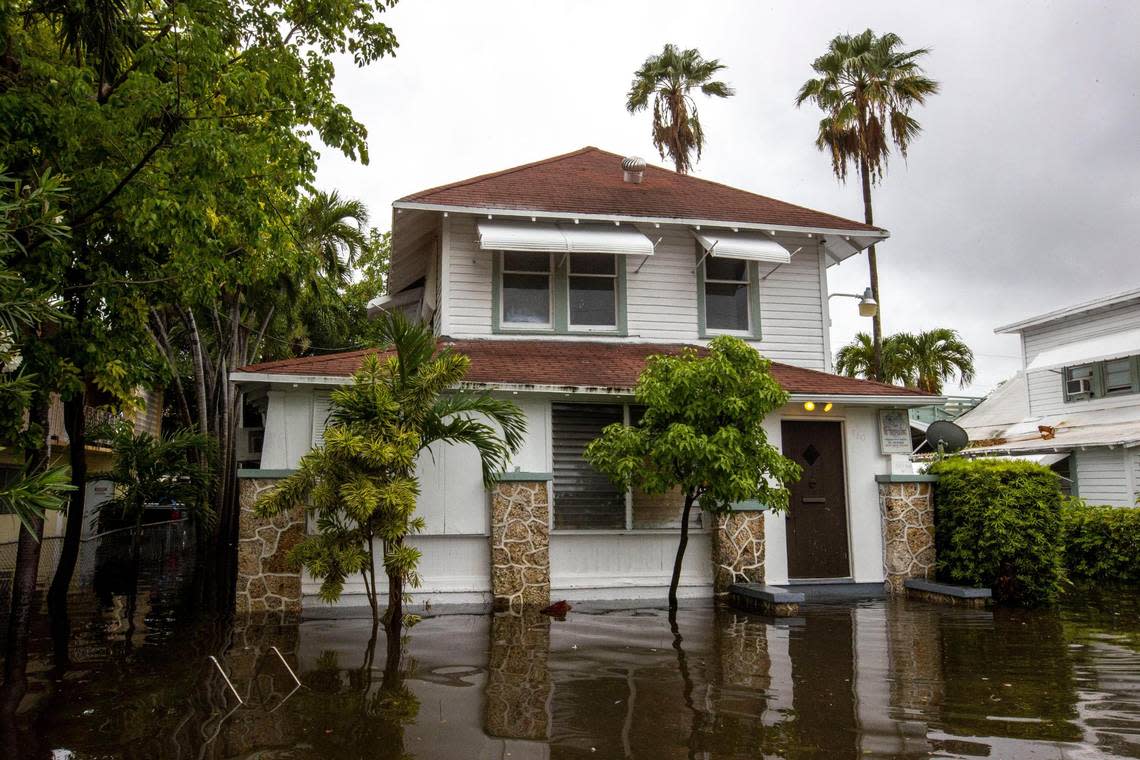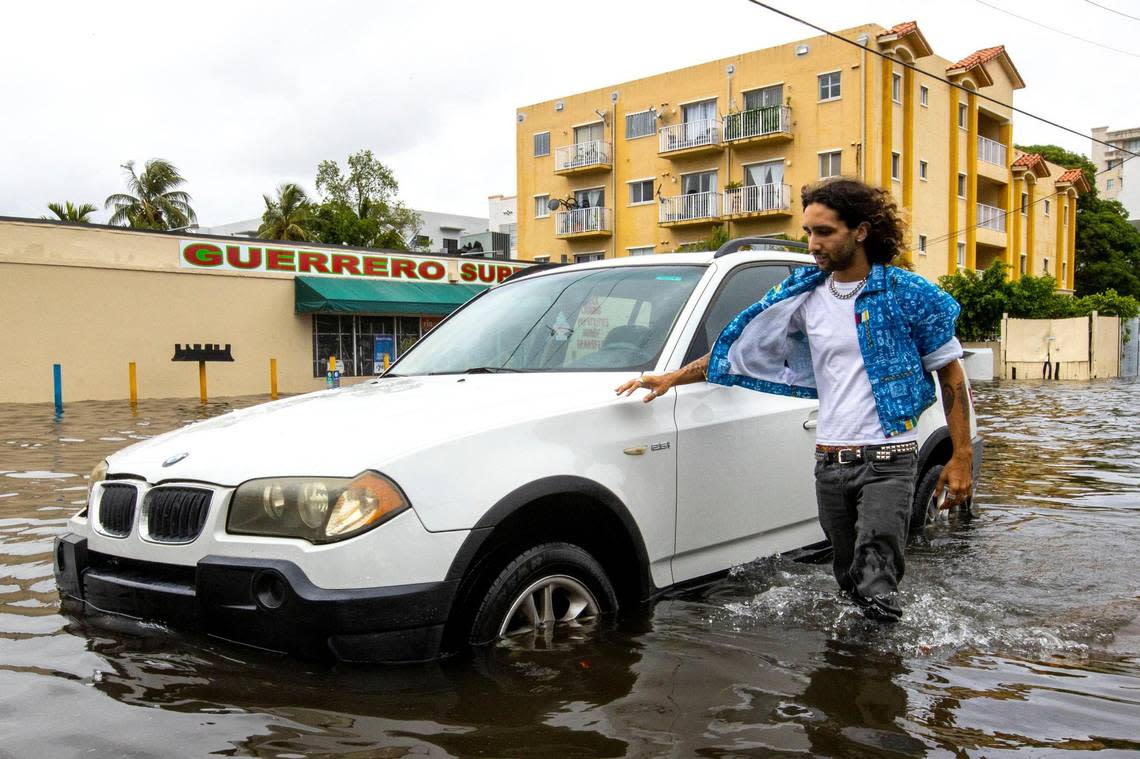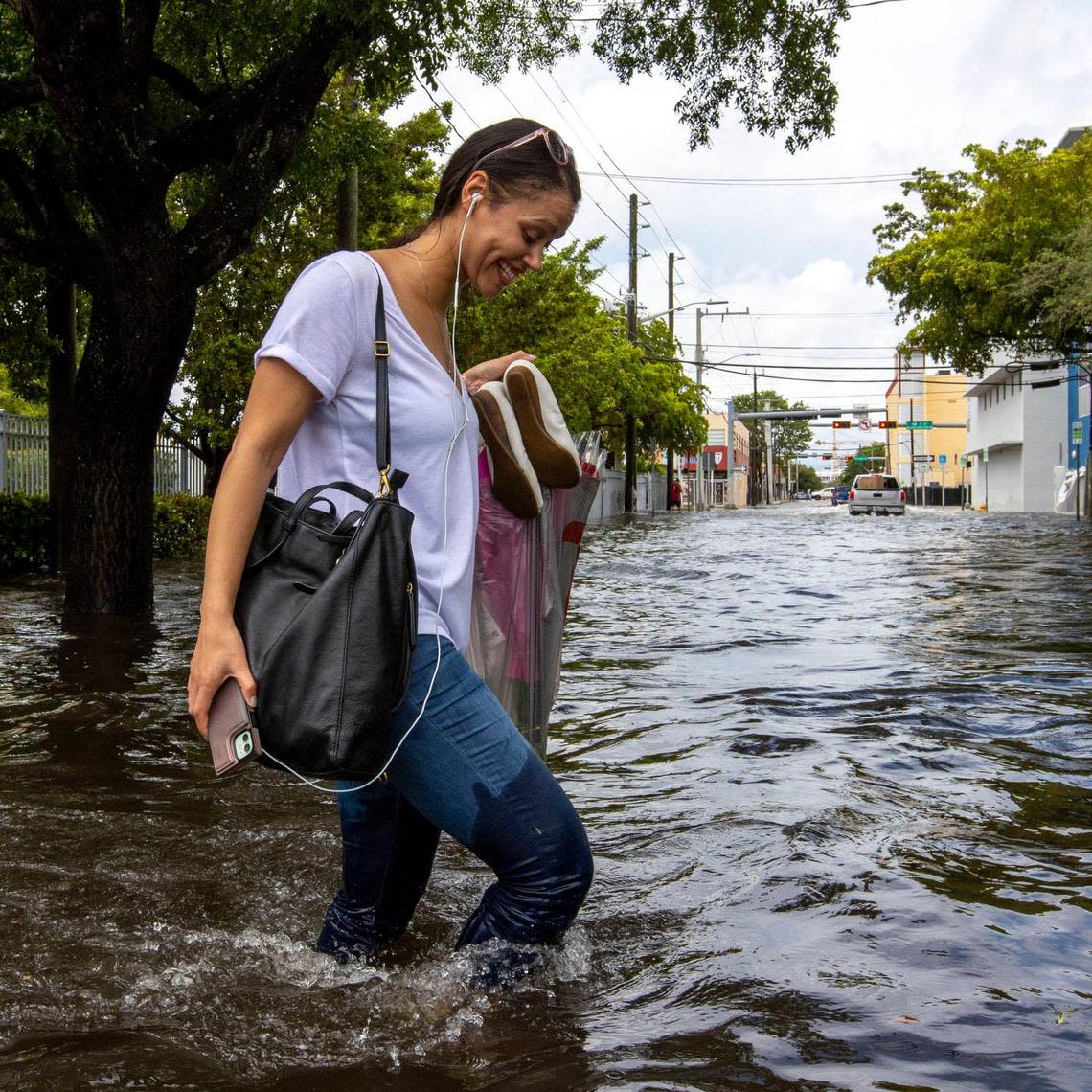Will South Florida start its rainy season with thunderstorms? What the forecast says
South Florida’s rainy season started on Monday — and with it came an increasing chance of showers and thunderstorms following a week of mostly dry weather, according to the National Weather Service in Miami.
And right on cue: Rain, lightning and thunder started before 4 a.m. Monday in Broward County and in the Miami airport area. Rain chance is 30% to 40% this week, according to the weather service forecast.
The region can also expect a streak of 90s weather starting Wednesday.
The five-month wet season, which ends Oct. 15, is when around 70% of the year’s rain falls in the southern half of Florida. In West Central Florida, which includes the Tampa Bay area, the season runs from May 25 to Oct. 10.
Are you new to the area or are curious about the rainy season? Here’s what to know:
Little downpour rolling onshore across Biscayne Bay pic.twitter.com/yWuhRSwCDa
— Jackson Dill (@Jackson_Dill) May 15, 2023
What makes the rainy season?
The wet season is characterized by consistently high moisture levels coupled with high temperatures that support near-daily development of showers and thunderstorms over the Florida peninsula and adjacent waters, the National Weather Service says.
Although today is officially the beginning of "rainy season" in the #Miami area, nature's onset date varies by several weeks. Also, as this snazzy map from SFWMD illustrates, the closer to the east coast you go, the less of a distinction there is between seasons. [1/2] pic.twitter.com/EURFSsoS11
— Brian McNoldy (@BMcNoldy) May 15, 2023
The exact location of the daily rainfall depends on interactions between the wind flow in the lower levels of the atmosphere and smaller-scale wind flows such as sea and lake breezes.

Why is rainy season important?
Year-round groundwater conditions are largely determined by the amount of precipitation received during the rainy season, the National Weather Service says.
For example, a drier or late-arriving rainy season can lead to significant water shortages, while an early or particularly wet rainy season can result in too much groundwater, which can result in flooding.

What weather hazards can be expected?
Flooding may happen when large amounts of rain fall over a short period of time or from a single, heavy storm, tropical system or hurricane, says the South Florida Water Management District, a regional governmental agency that manages the water resources from Orlando to the Florida Keys.
Even with effective water management systems in place, standing water could set off flash flood watches and warnings.
READ MORE: It’s heat season. Expect more health warnings this summer in Miami-Dade
Other weather hazards associated with the rainy season include lightning, damaging thunderstorm winds, flooding, hail and tornadoes.
READ MORE: Could 2023 be a quieter hurricane season? Early forecasts hint at below-average year
Additional hazards that coincide with the wet season include:
▪ Hurricanes and tropical storms: The Atlantic hurricane season runs June 1 through Nov. 30 — peaking in August, September and October.
▪ Heat: The hottest months on average in South Florida is July and August, when daily heat index values frequently reach or exceed 100 degrees.
▪ Rip currents: They are common throughout the summer months, with the highest risk often during holiday weekends.

Phases of the rainy season
The rainy season usually has three phases, according to the National Weather Service.
▪ Mid-May through early July: It’s the “stormiest” part of the season. Severe weather impacts, including strong and damaging winds, tornadoes, excessive lightning, hail and flooding are most likely during this period.
▪ Early July through mid-August: It’s the hottest, with intermittent dry periods.
▪ Late August through mid-October: It has a higher rainfall because of potential tropical systems and early-fall cold fronts.

How much rain is expected?
Here’s the amount of rain in inches expected during this year’s rainy season in selected South Florida locations compared to the 2022 season:
▪ Miami International Airport: 44.84 (down from 45.96)
▪ Homestead General Airport: 41:28 (down from 48.16)
▪ Fort Lauderdale-Hollywood International Airport: 37.49 (up from 34.47)
▪ Palm Beach International Airport: 36:30 (up from 30.29)

South Florida weather forecast
Here’s a five-day weather forecast for Miami-Dade, Broward and Palm Beach counties:
▪ Monday: South Florida’s rainy season starts Monday with a partly sunny morning with a slight chance of showers and thunderstorms. A 50% chance of rain is forecast in the afternoon with temperature highs in the mid-80s. At night, expect a 30% chance of rain with lows in the 70s.
▪ Tuesday: On Tuesday expect a mostly sunny morning with a 30% to 40% chance of showers in the afternoon and highs in the upper-80s. About the same chance of rain will continue at night with lows in the 70s.
▪ Wednesday: A mostly sunny morning is forecast Wednesday with about a 30% chance of rain in the afternoon accompanied by thunderstorms and highs in the 90s. At night, lows are forecast in the 70s with a small chance of rain.
▪ Thursday: Expect a mostly clear day with a 30% chance of showers and thunderstorms in the afternoon. Highs will be around 90 and lows in the 70s.
▪ Friday: The workweek will end with a mostly clear day and a 40% to 50% chance of rain and thunderstorms later in the day. Highs will be around the upper 80s and lows in the 70s.
A streak of summer-like temperatures with highs in the 90s is likely to get going across most of South Florida starting Wednesday thanks to a land wind in place pic.twitter.com/ks9c3lo2IH
— Jackson Dill (@Jackson_Dill) May 14, 2023
